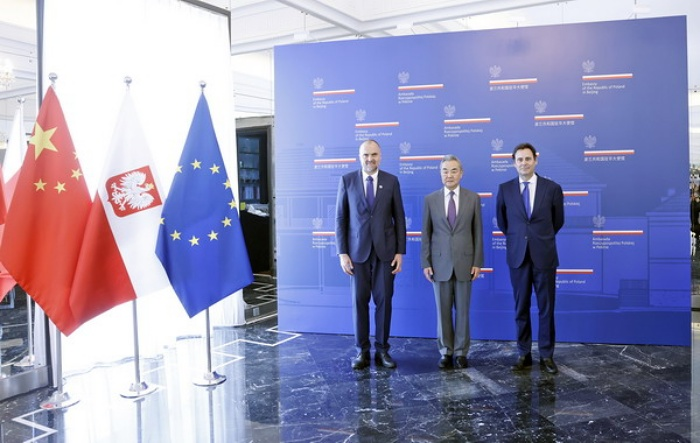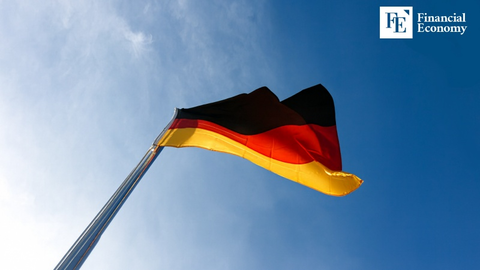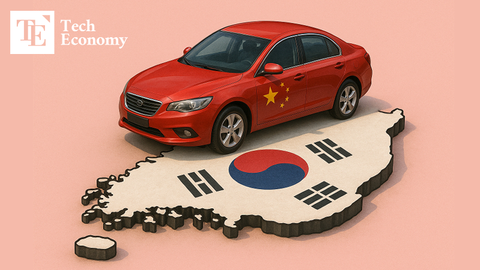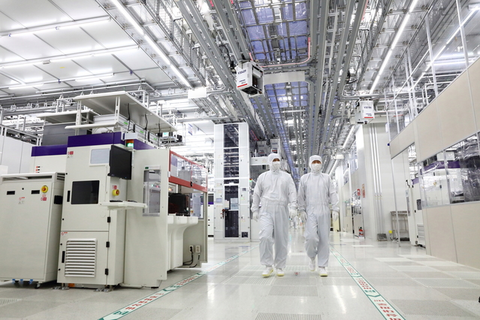"EU Rather than the US,” China's Export Pivot Turns Europe into a Key Variable Between the US and China
Input
Modified
China's Exports to Europe Rise 8% in May EU Shows Mixed Stance Between Pro-US and Neutral Policies Europe's Value Grows Amid Economic and Diplomatic Multipolarization

Amid escalating tensions with the United States, China is shifting the focus of its export strategy toward Europe. While China’s exports to the US plummeted last month, exports to Europe and Southeast Asia showed an upward trend. In particular, high-tech exports to European Union (EU) countries surged sharply, signaling the start of a supply chain realignment. China has taken strategic conciliatory measures, such as fast-tracking rare earth export permits for European companies, but internal EU resistance toward China and Europe’s security dependence on the US remain key variables.
China’s Export-Led Growth Strategy Finds a Detour in the EU
According to the General Administration of Customs of China on the 27th, China’s total exports in May reached USD 316.1 billion, up 4.8% from the same month last year. Imports during the same period fell 3.4% to USD 212.88 billion, resulting in a trade surplus of USD 103.22 billion. By region, exports to the US dropped 21%, while exports to the ten ASEAN countries and the EU rose 21% and 8%, respectively. Although exports to the US plummeted, growth in other regions offset the decline.
Narrowing the focus to the high-tech sector, the presence of these alternative markets becomes even more evident. A massive volume of Chinese high-tech products has flowed into the 27 EU member states, with some countries recording unprecedented import levels. Last month, China’s high-tech exports to Estonia surged 79.4% year-over-year, with increases of 70.5% in Cyprus, 46.7% in Bulgaria, and 42% in Hungary. In larger EU markets, China’s high-tech exports to France rose by 24.2%, to Germany by 21.72%, and to Sweden by 20.4% compared to the previous year.
This trend shows that China has not abandoned its export-led growth strategy. With efforts to boost domestic consumption and strengthen the faltering circular economy, China is turning to Europe as an alternative to maintain its position within the global supply chain. In the face of a blocked trade front with the US, China is reinforcing ties with European countries that maintain strategic neutrality or prioritize economic interests, thereby advancing its strategy to decouple from the US. Signs of deeper integration with Europe in key sectors such as rare earths, electric vehicles, and renewable energy are also emerging.
In fact, China appears to be easing its controls on strategic materials by expediting rare earth export permits for European companies. Rare earths are essential materials for Europe’s critical industries, including semiconductors, electric vehicles, and defense. By simply adjusting the pace of export approvals, China can exert tangible influence over these sectors. This move goes beyond trade, serving as part of a diplomatic strategy aimed at pulling Europe away from US-centered supply chain restructuring. China is effectively sending a message of reciprocity, signaling that easing rare earth restrictions comes with the expectation that Europe will reduce regulatory pressure.
China has also delivered more direct diplomatic messages. On the 26th, Chinese Foreign Minister Wang Yi, speaking at the Polish Embassy in Beijing during a meeting with EU diplomatic envoys, said, “China and the EU have the responsibility and ability to provide much-needed stability and predictability to a world full of turmoil.” He added, “Both sides should strengthen mutual trust, properly manage differences, share strengths, and elevate the comprehensive strategic partnership to a new level.”

China’s Outreach Seen as an Opportunistic Play on EU Divisions
While China is trying to strengthen ties with Europe by positioning it as a new diplomatic and trade partner, structural constraints make it difficult for the EU to readily accept these overtures. First, the EU is not a single nation but a union of 27 member states, each with vastly different foreign policy priorities and interests. Major economies like Germany, France, and Italy pursue a certain level of economic pragmatism in trade with China. However, many Eastern and Northern European countries remain wary of Beijing, citing security risks and human rights concerns. This fundamental divide makes it difficult for the EU to craft a unified China policy.
More importantly, Europe has steadily tightened trade restrictions on China in recent years. In April, the European Commission imposed countervailing duties of up to 66.7% on Chinese-made mobile access equipment (MAE), explicitly framing it as a response to market distortion. Back in January, the EU had already recommended a 15-month risk assessment period for outbound investments in strategic technology sectors like semiconductors, artificial intelligence, and quantum technologies. These moves are widely seen as preemptive controls to keep foreign capital, particularly from China, from gaining excessive access to critical European tech sectors, all under the banner of "technology security."
Geopolitical factors also loom large. Since Russia’s invasion of Ukraine, Europe has focused on strengthening security cooperation with the United States, including NATO expansion and maintaining the US military presence. Given that European countries have limited means to deter Russia independently, the diplomatic consensus is that Europe cannot fundamentally afford to weaken US influence. However, ongoing US pressure over defense cost-sharing and limited carve-outs from the Inflation Reduction Act (IRA) continues to fuel underlying tensions between the two sides.
Europe Seeks to Recalibrate Relations with Both the US and China
Amid these dynamics, Europe is showing signs of recalibrating its strategic distance from the United States and reshaping its diplomatic and security framework. Recently, Europe has intensified cooperation with third countries to counter Russia and expand its diplomatic reach. Last month, 15 European nations formally submitted a letter to the EU, urging the bloc to strengthen diplomacy with third countries as a way to pressure Russia. Discussions are also underway at the EU level to build a more multipolar diplomatic network. This reflects a clear intention to move away from a US-centric foreign policy line.
Japan has emerged as a key partner in this process. In recent months, Japan has expanded defense cooperation with Europe’s four major powers, Germany, France, Italy, and the United Kingdom , achieving concrete progress in areas such as joint military exercises, defense technology transfers, and cybersecurity agreements. These efforts go beyond simple bilateral cooperation, signaling a search for a joint defense structure that spans the Indo-Pacific and the European continent. The prevailing view in the international community is that both Europe and Japan share a strategic objective of checking China’s influence while avoiding over-reliance on the United States.
In this way, Europe is maintaining its security umbrella with the US while also pursuing economic and diplomatic diversification to raise its global stature. This shift signals Europe’s emergence as an independent diplomatic actor, breaking away from its traditional role as a supporting power. As Europe responds to transnational challenges, such as global supply chain restructuring and securing strategic resources, its role on the world stage is becoming increasingly important. Positioned between the US and China, Europe now seeks to act not only as a negotiator but also as a rule-setter in global affairs.





















